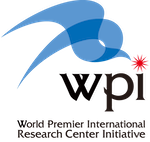Xiuzhen Yu (RIKEN) 3D magnetic imaging of nanometric (anti) vortices through transmission electron microscopy

The formation of vortices, antivortices, and their topological transitions has been extensively studied in condensed matter physics, emphasizing the crucial role of superconductivity and quantum computing [1]. On the other hand, in helimagnets with non-centrosymmetric crystal structures, emergent topological vortices (skyrmions) and antivortices (antiskyrmions) have been demonstrated under specific conditions of temperature and external magnetic field [2-3].
In two dimensions (2D), skyrmions are described as Bloch- or Néel-type spin whirls [3]. Bloch-type skyrmions are composed of Bloch domain walls, representing helical twists across the interface between up and down domains. In contrast, Néel-type skyrmions consist of Néel domain walls (cycloidal spin twists). Antiskyrmions, on the other hand, are mixtures of Bloch-type domain walls and Néel-type twisted spins. The latter, termed as Bloch lines, separate the Bloch domain walls of the antiskyrmions. In addition to (anti) skyrmions with integer topological charge N = ±1, (anti)merons, possessing topological charges of N = ±1/2, and their bundles, referred to bimerons (i.e., vortex-antivortex pairs), have been observed in a helimagnet Fe0.5Co0.5Ge through advanced transmission electron microscopy. By controlling the electric current, we have demonstrated the mutual transition between skyrmions and bimerons and the transformation of individual bimerons into a skyrmion lattice [4].
In three dimensions (3D), (anti)skyrmions are string-like objects extending entirely through the bulk. The twisted skyrmion string, equivalent to a 3D topological soliton – a hopfion [5] – has been predicted in chiral-lattice magnets [6] but is less explored experimentally. By utilizing an external magnetic field and electric current, we demonstrate fractional hopfions with nonzero topological charge and their ensembles at lower temperatures (approximately 100 K), far from the transition temperature (TC, approximately 278 K), in a chiral-lattice magnet FeGe [7]. Microsecond current pulses and an in-plane magnetic field were employed to control the dynamics of the expansion and contraction of the bundle of skyrmions and fractional hopfions, as well as their current-driven Hall motion [7].
In this talk, I will mainly focus on 3D magnetic imaging of various 3D topological spin textures, including (anti)skyrmion strings, (anti)merons, vortex-antivortex pairs, fractional hopfions.
*This work was supported in part by Grants-In-Aid for Scientific Research (A) (Grant No. 19H00660, 23H05431) from the Japan Society for the Promotion of Science (JSPS) and the Japan Science and Technology Agency (JST) CREST program (Grant No. JPMJCR1874, JPMJCR20T1), Japan.
[1] L. Chibotaru, et al. Nature 408, 833 (2000).
[2] Y. Tokura, and N. Kanazawa, Chem. Rev. 121, 2857 (2021).
[3] N. Nagaosa, and Y. Tokura, Nat. Nanotechnol. 8, 899 (2013).
[4] X. Z. Yu, et al. https://doi.org/10.1002/adma.202306441.
[5] J. B. Tai and I. I. Smalyukh, Science 365, 1449 (2019).
[6] R. Voinescu, J. B. Tai and I. I. Smalyukh, Phys. Rev. Lett. 125, 057201 (2018).
[7] X. Z. Yu, et al. Adv. Mater. 35, 2210646 (2023)


